#jurassic insect
Explore tagged Tumblr posts
Text

Fossilized dragonflies. Annual report of the Board of Regents of the Smithsonian Institution. 1953.
Internet Archive
#jurassic#carboniferous#insect#insects#fossil#fossils#government publications#paleobiology#paleontology#nemfrog#1953#1950s#1k
1K notes
·
View notes
Text
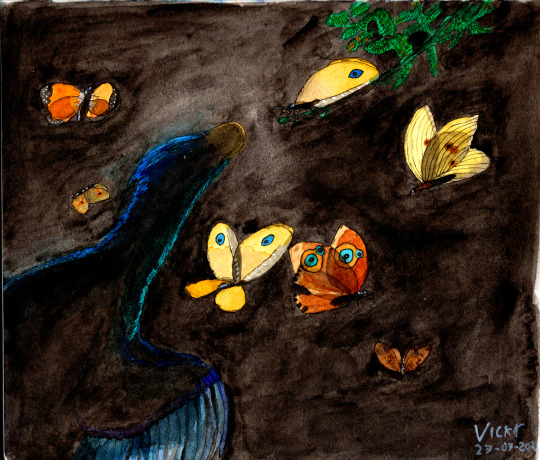
In a dense Sequoia forest where the darkness is broken by only a single solarbeam, a Caihong curiously inspects a Kalligrammatid, seeing a face not unlike its own staring back from the strange insect's transparent wings.
A bit of an experimental piece. Although kalligrammatids superficially look like butterflies, these Jurassic insects are in fact lacewings, entirely unrelated to butterflies! One of the differences this implies is that their gorgeously patterned wings were in fact transparent. This gave me the idea to use some extreme backlighting to really show them off, as well as the gloriously iridescent Caihong's feathers. This watercolour, for which I gratefully used this fantastic guide to restoring Kalligrammatids, features Affinigramma myrioneura; Kallihemerobius almacellus, aciedentatus, and feroculus; Kalligramma circularia, and the Maniraptoran-mimic Kalligramma brachyrhyncha.
#caihong#anchiornithid#kalligrammatid#neuroptera#avialan#bird#theropod#dinosaur#insect#cw: bugs#backlighting#watercolour#dark#jurassic#paleoart#my art#palaeoblr
148 notes
·
View notes
Note
I've watched some videos about mantises and there are often comments like "imagine if mantises would be at least a size of dog we humans would be damned" and I can't help but think about Nnoi))))

❝ 'Daz right I'm fuckin' monster sized. ❞
#[ I'M LATE WITH THIS ]#[ sorry for taking 200 years anon ]#[ BUT YES ]#[ i'm glad you think of nnoi 8)))) bc YES this fits him perfectly ]#[ also i sometimes want a monster!au for him but then i remember.. he's already a monster in canon fjfjfj ]#[ i love mantids tho ]#[ they're amazing like ?? so incredibly strong and fast ]#[ they should make like a jurassic world movie about giant insects uvu ]#[ thank you for sending! ]#despair for me. ╱ in character.#talking shit. ╱ answers.#the praying mantis. ╱ canon verse.
4 notes
·
View notes
Text

Look at these gorgeous dragonflies!
2 notes
·
View notes
Text
As everyone soon knew, that warning took the form of a story about recreating a variety of dinosaurs from cloned DNA recovered from insects preserved in amber.
"Frankenstein's Footsteps: Science, Genetics and Popular Culture" - Jon Turney
#book quote#frankenstein's footsteps#jon turney#nonfiction#jurassic park#michael crichton#dinosaurs#cloning#dna#insects#preservation#preserved insects#amber
0 notes
Note
terribly sorry if this is a weird question but i would LOVE to hear more about wasps . funky little dudes

wasps are a relatively new species in terms of insect evolution, having appeared in the jurassic period alongside the first dinosaurs. there are hundreds of thousands of species, which could include ants and bees depending on your exact definition. they're all included in the group apocrita, or the "wasp waisted" hymenoptera. they are some of the most successful insects on the planet.
DID YOU KNOW?: the stinger of apocrita is a highly adapted ovipositor, the organ used for egg laying.
STEP ONE: their ancestors, the sawflies, had evolved a serrated ovipositor that could bore into plant material as a safe place to lay their eggs.
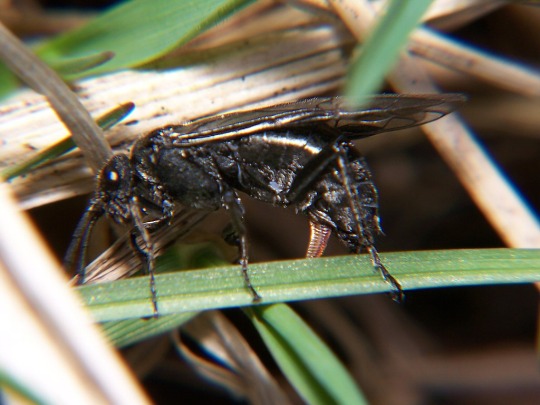
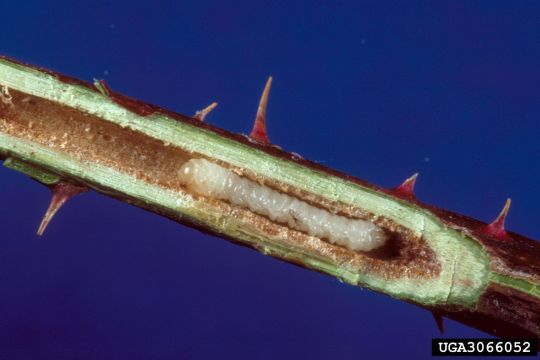
STEP TWO: the first wasps would use the ovipositor to instead lay their eggs inside of other animals (parasitoidism), which then provides the developing young plenty of food. many of these wasps would develop a unique variety of venoms to aid in the capture of prey, often by paralysis.
DID YOU KNOW?: there are more parasitoid wasps than any other kind of wasp, with an estimated 100,000 species! this includes the iconic cicada killer wasp.
STEP THREE: the transition from egg laying to defense is not entirely understood, but is believed by some to have been a direct response to predation by vertebrates. if you think about it, it's not all that easy to sting through a tough exoskeleton (though it can be done), it's much easier to sting soft, fleshy things that are trying to eat your delicious grub children. these wasps no longer lay eggs with the ovipositor, instead having an opening at the base of the stinger. the venom would be adapted to illicit a pain response, a harsh lesson to not mess with wasps!
DID YOU KNOW?: male wasps CANNOT sting as they do not have an ovipositor. though, some males will still mimic stinging, or even have pointed abdomens to help sell the illusion.
QUICKFIRE ROUND:
while wasps are famously eusocial and will often live in large communal hives, the vast majority of wasps are solitary and live on their own.
the largest species of wasp is the northern giant hornet, who's queens are around 2 inches in length. the smallest species of wasp is also the smallest insect ever! dicopomorpha echmepterygis males have been measured as small as 139 micrometres in length.
its common knowledge that wasps can sting multiple times and honey bees cant. this is a unique adaptation of the honey bee, who deliver a more potent sting by leaving the stinger embedded in the victim as it continues to pump rounds and rounds of venom. unfortunately, the stinger is directly attached to many vital organs, which are then damaged in the process, causing the honey bee to die.
insects breathe by absorbing oxygen directly into their "blood". wasps aid in this by rapidly expanding and collapsing their abdomen to force air in and out. if her butt is vibrating, shes just taking a breath :)

the iconic coloration of the wasp, usually yellow and black, is part of their defensive strategy! this is a form of aposematism, the advertising of danger to potential predators. they want you to notice them, so you know to steer clear!
the coloration is SO iconic that thousands of insect species mimic it in hopes of also warding off predators. this includes flies, moths and butterflies, and even their own ancestors, the sawflies.
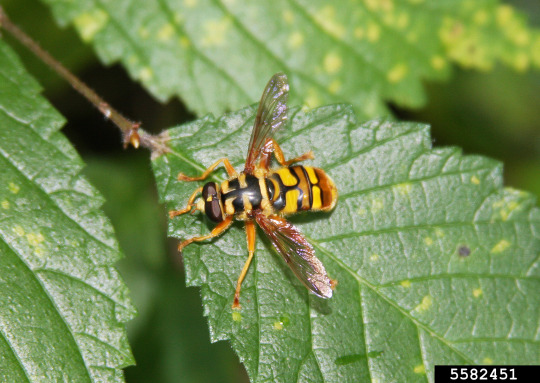

parasitoid wasps are very specific in their choice of prey, likely due to the unique cocktail of venom they must possess to influence any given species. for any arthropod, there is a species of wasp that specializes in parasitizing THAT specific arthropod.
because i know some people are wondering, the venom of parasitoid wasps can only effect arthropods, there will be no wasp based mind control within the next few million years. some parasitoids have been known to sting defensively, which is still quite painful depending on the exact species.
some wasps are HYPERPARASITOIDS, meaning they will lay their eggs on other parasitoids that are already parasitizing something. its parasitoids all the way down.
one of these hyperparasitoids is the velvet ant. despite it's common name, they're actually a species of wasp with flightless females. the males do possess wings, and in some species, will assist the female by carrying her to an environment with better resources.
the venom of gall wasps will, when inserted into a tree or other vegetation, cause it to grow a mass, known as a gall. basically a bootleg fruit, filled with nutrients. these wasp galls will then safely house the wasp's young which eat it from the inside out, before emerging as adult wasps.
obviously, theres wasps that parasitize the gall wasps inside the gall.
fig wasps are the only animals that can pollinate figs, and do so by crawling inside to lay their eggs before dying inside the fruit. well, the only animal other than humans, which find figs quite tasty but don't typically enjoy eating dead wasps.
i probably wont ever get a better opportunity to share this information, sorry: the queen honey bee mating with a drone is audible to the human ear, making a popping sound. the drone's endophallus (penis) is violently detached in the process and he dies soon after.
lastly, lets just marvel at the beauty of the wasp. they have some of the most striking appearances of any animals on earth.


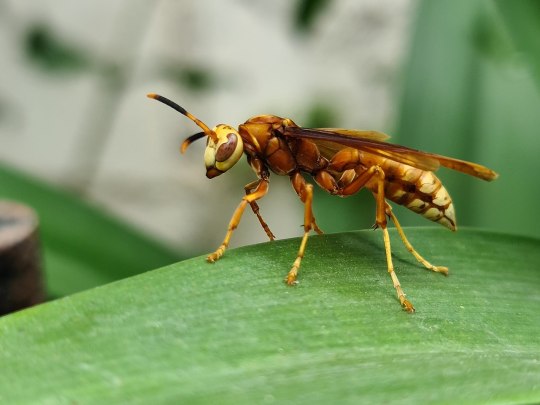



i am just fillled with awe when i look at them. a powerful and intimidating predator that takes great care in raising the next generation. perhaps my favorite animal.
#SORRY. YOU HAVE ACTIVATED HYMENOPTERA SPECIAL INTEREST MODE.#corrections: i say 'species' when i mean 'group' a lot. also i mixed up jurassic and triassic dinosaurs had already been around for awhile
164 notes
·
View notes
Text
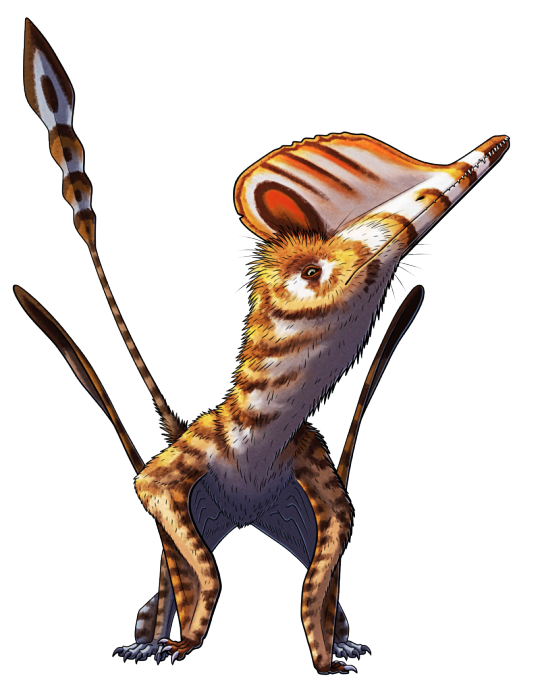

Wukongopterus lii was a pterosaur that lived during the mid-to-late Jurassic, about 164 million years ago, in what is now northeastern China. It was fairly small, with a wingspan of around 70cm (~2'4"), and showed a mixture of anatomical features in-between the long-tailed short-headed 'rhamphorhynchoids' and the short-tailed long-headed pterodactyloids.
Its long jaws were lined with tiny pointed conical teeth, suggesting it was adapted for primarily feeding on insects. It also had a very slight overbite, with the first two pairs of teeth in its upper jaw protruding almost vertically over the end of its lower jaw.
As a fully mature adult it would have had a low bony crest on its head that probably supported a larger keratinous structure – similar to other known wukongopterids – although the exact size and shape is unknown since the one confirmed specimen of Wukongopterus is missing that particular part of its skull. Another fossil nicknamed "Ian" may represent a second individual of this species, showing a different crest arrangement further forward on its snout, so I've made two different versions of today's image to reflect that possibility.
———
NixIllustration.com | Tumblr | Patreon
References:
Cheng, Xin, et al. "New information on the Wukongopteridae (Pterosauria) revealed by a new specimen from the Jurassic of China." PeerJ 4 (2016): e2177. https://doi.org/10.7717/peerj.2177/supp-1
Garland, Nick. “Ian the Wukongopterid.” Pteros, https://www.pteros.com/pterosaurs/ian-the-wukongopterid.html
Wang, Xiaolin, et al. "An unusual long-tailed pterosaur with elongated neck from western Liaoning of China." Anais da Academia Brasileira de Ciências 81 (2009): 793-812. https://doi.org/10.1590/S0001-37652009000400016
Wikipedia contributors. “Wukongopterus.” Wikipedia, 8 Dec. 2023, https://en.wikipedia.org/wiki/Wukongopterus
XuanYu Zhou 周炫���. Anatomy, Systematics and Paleopathology of Pterosaurs: insights based on new specimens from China. 2023. Hokkaido University, PhD thesis. https://doi.org/10.14943/doctoral.k1560
#science illustration#paleontology#paleoart#palaeoblr#wukongopterus#wukongopteridae#monofenestrata#pterosaur#art
346 notes
·
View notes
Text




Snakeflies (order Raphidioptera) are interesting creatures. I like to call them "dinosaur bugs" because they're a group of insects that evolved in the early Jurassic, reaching peak diversity during the Cretaceous. Snakeflies are what's known as a relict group, meaning they used to be way more widespread than they are now. They're a remnant of a more abundant past. These insects undergo complete metamorphosis. Both the larva and the adult are predators of soft-bodied arthropods. Snakeflies have four wings, so they're neither flies nor snakes :-) Agulla sp., Northern California.
#snakefly#raphidioptera#nature#bugs#nature photography#biodiversity#animals#inaturalist#bugblr#arthropods#entomology#insect appreciation#agulla#dinosaur#biology#creature#macro#macro photography#insect photography#long#snek#the ones with ovipositors are female#ovipositor = long tail
126 notes
·
View notes
Text
Researchers reporting in the journal Current Biology on December 4 have found the earliest-known fossil mosquito in Lower Cretaceous amber from Lebanon. What's more, the well-preserved insects are two males of the same species with piercing mouthparts, suggesting they likely sucked blood. That's noteworthy because, among modern-day mosquitoes, only females are hematophagous, meaning that they use piercing mouthparts to feed on the blood of people and other animals. "Lebanese amber is, to date, the oldest amber with intensive biological inclusions, and it is a very important material as its formation is contemporaneous with the appearance and beginning of radiation of flowering plants, with all what follows of co-evolution between pollinators and flowering plants," says Dany Azar of the Nanjing Institute of Geology and Paleontology at the Chinese Academy of Sciences and the Lebanese University. "Molecular dating suggested that the family Culicidae arose during the Jurassic, but previously the oldest record was mid-Cretaceous," says André Nel of the National Museum of Natural History of Paris (Muséum National d'Histoire Naturelle de Paris). "Here we have one from the early Cretaceous, about 30 million years before." The Culicidae family of arthropods includes more than 3,000 species of mosquitoes. The new findings suggest that male mosquitoes in the past fed on blood as well, according to the researchers. They also help to narrow the "ghost-lineage gap" for mosquitoes, they say.
Continue Reading.
187 notes
·
View notes
Text
Just found this amazing paper reconstructing what kinds of animal sounds you would hear in prehistoric landscapes:
Stridulating insects, including crickets, performed the first terrestrial twilight choruses during the Triassic. The twilight chorus was joined by water boatmen in the Lower Jurassic, anurans [frogs] in the Upper Jurassic, geckoes and birds in the Lower Cretaceous, and cicadas and crocodilians in the Upper Cretaceous. Parallel evolution of defensive stridulation took place multiple times within Malacostraca, Arachnida and Coleoptera [possibly from the Devonian]. Parallel evolution of defensive and courtship-related sound production took place in Actinopterygii [bony fish], possibly as early as the Devonian. Defensive vocalisations by tetrapods probably did not appear until their predators acquired tympanic ears in the Permian. Tympanic ears appeared independently in Diadectomorpha, Seymouriamorpha, Parareptilia, Diapsida and derived Synapsida. Crocodilians and birds acquired vocal organs independently, and there is no anatomical evidence for vocal ability in bird-line archosaurs basal to the avian clade Ornithothoraces. Acoustic displays by non-avian dinosaurs were therefore probably non-vocal. Other aspects of the evolution of acoustic behaviour in these and other lineages are also discussed.
22 notes
·
View notes
Text
Archovember 2024 Day 29 - Campylognathoides zitteli
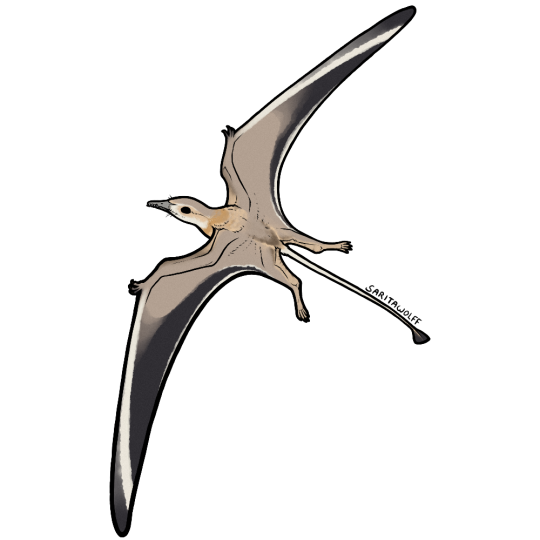
Living in Early Jurassic Germany, Campylognathoides zitteli was a small early pterosaur with comparatively long wings. Its large eyes may have reflected a nocturnal lifestyle. Gut contents have been found and include the belemnoid cephalopod Clarkeiteuthis conocauda, so Campylognathoides likely ate aquatic invertebrates and even large insects, though its teeth were not as long and specialized as its contemporary Dorygnathus. Its shorter, stronger teeth may have allowed it to crack through the exoskeletons of invertebrate prey, and its long wings may have allowed it to swiftly dart after flying insects and catch them on the wing like a kestrel or mastiff bat!

Found in the Sachrang Formation, Campylognathoides zitteli lived at the edge of a shallow epicontinental sea. Aside from Dorygnathus, it would have also lived alongside the long-tailed rhamphorhynchid Parapsicephalus. On land, it could have come across the sauropod Ohmdenosaurus. But much more is known about the sea of this formation, and Campylognathoides could have caught glimpses of hybodonts, chimaeras, schools of ray-finned fish, coelacanths, ichthyosaurs, plesiosaurs, sphenodonts, marine turtles, and marine crocodylomorphs beneath the waves.

(This fossil is of C. liasicus, a Campylognathoides species with comparatively shorter wings)
This art may be used for educational purposes, with credit, but please contact me first for permission before using my art. I would like to know where and how it is being used. If you don’t have something to add that was not already addressed in this caption, please do not repost this art. Thank you!
#Campylognathoides zitteli#Campylognathoides#Novialoid#pterosaurs#archosaurs#archosauromorphs#reptiles#Archovember#Archovember2024#Dinovember#Dinovember2024#SaritaDrawsPalaeo#Early Jurassic#Germany#Sachrang Formation
25 notes
·
View notes
Text

Two Hadrocodium who have made their nest in a patch of moss on a tree are rudely disturbed by a curious snakefly. Meanwhile a Tatisaurus has developed a sudden craving for moss.
#hadrocodium#mammaliaform#mammal#snakefly#insect#tatisaurus#thyreophoran#megaloptera#beetle#cw: bugs#moss#jurassic#paleoart#palaeoblr#my art
21 notes
·
View notes
Text
Bucci gang - incorrect quotes (but as things my friends said)
Fugo: "So is he an alcoholic or something?" Bucciarati: "Nooo don't say that. He is... more like a... recreational drinker." Abbacchio: "You could say I'm a wine taster." Fugo: "I doubt drinking 2 and half bottles is called tasting."
--------
Mista: "What does being a workaholic mean?" Narancia: "It's a person who doesn't drink anymore." Fugo: "I swear your IQ is equivalent to your shoe size."
--------
Trish, helping Giorno pick out outfit from his closet: "I don't know... what's something you haven't had in a long time?" Giorno: "Full 8 hours of sleep, a proper meal, good mood..." Trish: "I ment clothes, dumbass!"
--------
Narancia: "There is a spider in my room! Giorno, come pick it up and throw it out!" Giorno: "Oh come on, we throw insects out all the time. Why can't they live with us? Give me one good reason why I should throw this poor spider out." Narancia: "Well, first of all, he lives here rent free." Fugo: "So do you and yet we let you stay."
--------
Abbacchio: "This is a very tricky situation. We should get the adults." Bucciarati: "WE ARE THE ADULTS!"
--------
Narancia: "How in the hell am I supposed to concentrate when all I can hear in my head is Phineas & Ferb theme song?"
--------
*watching Jurassic World* Mista: "Oh he is SO hot..." Giorno: "The dinosaur?" Mista: "No, Chris Pratt. What the hell, man?!"
--------
Giorno, flirting: "What's your favorite constellation?" Fugo, with zero relationship experience: "Is this some kind of a psychological test? Why are you asking these weird questions?"
--------
Mista, counting money: "Here is your euro" Mista: *holds out 0,50€ coin* Narancia: "Listen up, asshole, I might not know what 5+7 is, but I know what 1 euro coin looks like."
--------
Abbacchio: "My good mood is just like the pen you are using right now." Bucciarati: "Please elaborate..." Abbacchio: "Throughout the day it randomly vanishes. Especially when I need it the most."
--------
Narancia: "Is there like an official term you would use when describing people who drive under the influence?" Fugo: "Idiots."
--------
Trish: "Can I ask you something?" Mista: "Hold on, I'm doing 3 things at once. And that is a lot for a man." Narancia: "Yeah, Trish, hold your thought. Boys can't multitask."
#jjba#jjba part 5#jojo's bizarre adventure#vento aureo#golden wind#bruno bucciarati#leone abbacchio#pannacotta fugo#giorno giovanna#guido mista#narancia ghirga#trish una
56 notes
·
View notes
Text
Gestation 1.5
I wonder if Taylor's night is gonna get any better

This is actually a really good passage for the building tension. Lung's not gonna kill our protagonist in the fifth chapter of the novel but she doesn't know that. She can see her options narrowing down and her chances getting slimmer, she doesn't know there's like, a million plus words more to her story. This could be it, and this really sells it.

Okay actually I'm gonna circle back to something I totally missed in 1.4, which is the mild comedy in Taylor hacking multiple EpiPens in her kit as a teenager with, I'm gonna guess a modest allowance? You can tell this was written by someone who hasn't had to put up with US healthcare, that's minimum like $600 bucks of medicine, and frankly I don't think it's going to be any cheaper when the predominant pharmaceutical company is run by a Nazi.

Sweet of her dad, and also I cannot imagine facing down a hitter like Lung with nothing but a can of pepper spray, Jesus Christ that's stressful. This never comes up in the retellings, Taylor has cast-iron balls to pull this stunt.

Kudos on this, it's such a cool descriptor, and again: huge props to Taylor for staring this down and not running like hell.
Side note, either Lung's eyes are a magnet for violence or else Taylor is compelled to target the eyes. Maybe both. See if it keeps happening with either of them I guess.

Something something Jurassic Park reference, also do we need the reminder that he has an accent

YEAH YEAH YEAH YEAH IT'S THE CAVALRY BABY

Listen I know I'm a little spoiled here and the bias is showing but I already love these kids, look at em! They decided to swing at Lung for the sake of the girl who'd already pried him off their backs, they didn't need to save her but they did. I can't wait for them all to break my heart one way or another, it's gonna rule.

Grue is real as fuck for his costume, it's so cool.
Also I desperately want to know what the conversation was like for the Undersiders to decide "yeah fuck it let's put up our dukes against the head of the ABB." Who voted in favor of that?
The "but yeah" really sells the underlying youth of the character, btw. Gonna go out on a limb and guess there's a lot of kids who feel like they need to hold themselves like adults (and then don't really know how) in this story.

Squad squad squad squad
Quick and dirty introduction to the team, good enough start as anything, also lmao at Taylor just standing there with jelly legs trying to process this and completely unable to make words happen. Poor girl

"Certainly least" my ass, kid's got style.

Can Tattletale actually stop herself from talking? Not like in a power sense I mean in a needing to be smart way. I assume she can but it's not out of the question that she just cannot put a lid on it. I've known people like that.
Also an effortless display of trust and teamwork. Tattletale says boogie and Bitch is on it immediately.

So the fox parallels just start immediately, okay. Everyone always compares her to a fox, or makes her fursona a fox, or describes a vulpine grin, and I figured that was drawing on the text but I didn't think it came up literally in the first chapter she appears.

There's a couple different emotions I feel at this last paragraph. Per usual I feel bad for Taylor because this truly just has not been her night, she gets like half a W against fucking Lung but gets scared half to death, saved by villains, and then mistaken for a villain as well. Awful way to start a career.
On the other hand, Taylor, honey, you're terrifying and used a bunch of venomous and painful insects in order to break up a gang meeting, you're in all blacks and grays with big ol yellow eyes, your entire aesthetic screams villain, this is at least partly your own fault.
On the third hand, knowing full well how important the Undersiders are gonna be, and how feared Taylor is gonna be as a future villain, it's not hard to look at this like. Well what's so bad about them being villains, and what's so bad about being mistaken for one. Obviously it's a matter of morality and perspective and stuff like that, Taylor seems to only now be dipping her toes into moral flexibility, but the gift/curse of future knowledge means there's something, I dunno, a little sweet about this encounter.
Current Thoughts
Tired. Dragging my hands down my face rn. Last one for tonight.
This was a cool sequence. Rough introduction to the Docks and ABB aside, the fight between Lung and Taylor was super cool, a great feeling of the momentum shifting between the two as Taylor's bugs stop being able to keep up with the fire, the desperate play with the pepper spray, and being just. Fully backed into a corner until she's saved by the cavalry. If this is how the fight scenes keep going for this series then I think I'm in for a fun ride.
Also yaaaaaaaaay the team has been introduced, I can't wait to find out how much of the perception of them I've gotten through fanworks and my own half-baked osmosis is going to contrast with their canon personalities. Grue being all serious and Tattletale being a smirking know-it-all literally described as fox-like feel like solid indicators, if nothing else.
Next chapters tomorrow. It's Armsmaster right after, right? See what he's like.
35 notes
·
View notes
Text
Get to know me
Thank you for the tag, @giazzurra ! These are always so interesting. Love your colors.
Last Song: That I sought out--Tiger Phone Card by Dengue Fever (because Cambodia and research)
Favorite Color: Pink or Yellow (depends on the day)
Currently Watching: The Legend of Vox Machina Season 3
Last Movie: Free Guy (I hadn't seen it yet).
Current Obsessions: uuuh the concept of the inhuman as introduced by the book Ancillary Justice by Ann Leckie? I want to be a creature with a thousand different mouths. Lacking that, I'll write one God dammit.
Relationship Status: single (yay!)
Last thing I googled: Okay so I'm going to cheat a bit cause this isn't strictly the last thing I googled but it is the most important thing I researched in the last two weeks. SO, I needed to find a loud insect, yeah? For a story?
So I look up top loud lists. I pick katydids. I find out that they found a katydid fossil from the Jurassic era in such good nick that with microscopes they could figure out how it made noise based on the spacing of the rasp like teeth on the wing edges.
Biologists who specialize in animal sounds study related katydid legs and RECREATE the sound of a 165 million year old katy did and put it on you tube. You can LISTEN TO THEM.
Look:
https://www.smithsonianmag.com/science-nature/how-scientists-are-recreating-a-mating-call-last-heard-in-the-jurassic-period-164421137/
youtube
Okay, I'm done.
Tagging @gabriel-shutterson @inkloom
#katydid#get to know me#i thought love and friendship was fun but a bit dull next to P&P#seriously love the colors#must look up the obsession
15 notes
·
View notes
Note
hi again I hope you can do a Jurassic world au yandere raptor hybrid parents wolverine and storm [ animated series ] x baby raptor hybrid reader and how they react when their baby gets kidnapped and they go with Owen and Claire to get Maisie and their baby back.
Okay! So, in the Jurassic World AU, it isn't a crossover, so Owen and Claire and Maisie aren't in it. It's just the X-Men characters and Reader in this setting. I should have specified, so I'll do it now. But I CAN do raptor hybrid parents! Let's try this-
• Something wasn't right.
• The air was still, no birds or insects singing a low hum. The trees seemed too tall, too dark. The shade was too cold, biting and nipping at their skin and scales. Yet the problem seemed to be something else...
• Neither one could remember much of their before this place, with its humans and tasers and fences, but they didn't need to. They had a life here, with each other, and their own hatchling to take care of. Or it had been that way, before someone had taken them. The older male knew their enemies had caught their little while they were away, he could smell their blood and the stench of mammals clinging to their nest. His mate, a female with bright eyes and white scales, had ruthlessly torn through their territory, calling out for their child. Yet neither one could find the humans, only a trail to follow...
• Hunting down the ones who did this atrocity felt easy. It didn't take much to track them into their homes, to follow them on their hikes, to hunt then and chase them til they dropped and cried and pleaded for mercy. Yet none was given. The last thing they'd ever see was of claws racing towards them, or of sharp teeth closing around their head. It all lead to this moment, to a lone facility in freezing snow, holding their hatchling and the last of the monsters who took them...
• Waiting in the cell made you feel icky. All cold and tired and bruised, like every drop of warmth was sucked out of you. The humans prattled on and on, talking about numbers and people who wanted them, who wanted a pet or monster or stuffed tropy... It made you cry, hearing all of this. You shied away from any who came near, tucking your tail in your hands and hiding in the shadows. It all changed when a loud wail echoed in the room, red lights flashing sharply through the darkness.
• It was then the humans began panicking. Running and racing around, screaming and crying, talking about specimen breaches and other raptors- That made you perk up. Could it be Mom and Dad? Did they come back for you? They didn't abandon you?
• It appeared not. You could hear their angry screeches, their claws clicking on metal floors, their feet pounding down the halls as they came closer to finding you. Only a few humans remained, a frazzled doctor and a couple of guards, and then-
• Your parents were there, mad and angry and screaming. You looked away as you heard the humans wail and beg, you covered your ears and shut your eyes. The scent of copper was thick, the acrid scent of death soon following. But then, the bars were torn apart, and in a flash, you were in the arms of your parents, each chirping up a frenzy as they looked over you.
• You chirped up happily, only getting anxious when you asked about the humans, but you were shushed, told not to look, and soon you all were leaving. Your mom kept humming, tickling your cheeks and belly, while your dad kissed your head and stroked your back. You couldn't help but nuzzle into their warm embrace, so safe from the carnage surrounding you...
#honeycomb thoughts#platonic yandere marvel#yandere platonic marvel#platonic yandere xmen#yandere x-men#platonic yandere marvel x reader#platonic yandere xmen evolution#platonic yandere xmen: the animated series#🦖jurassic world au
36 notes
·
View notes